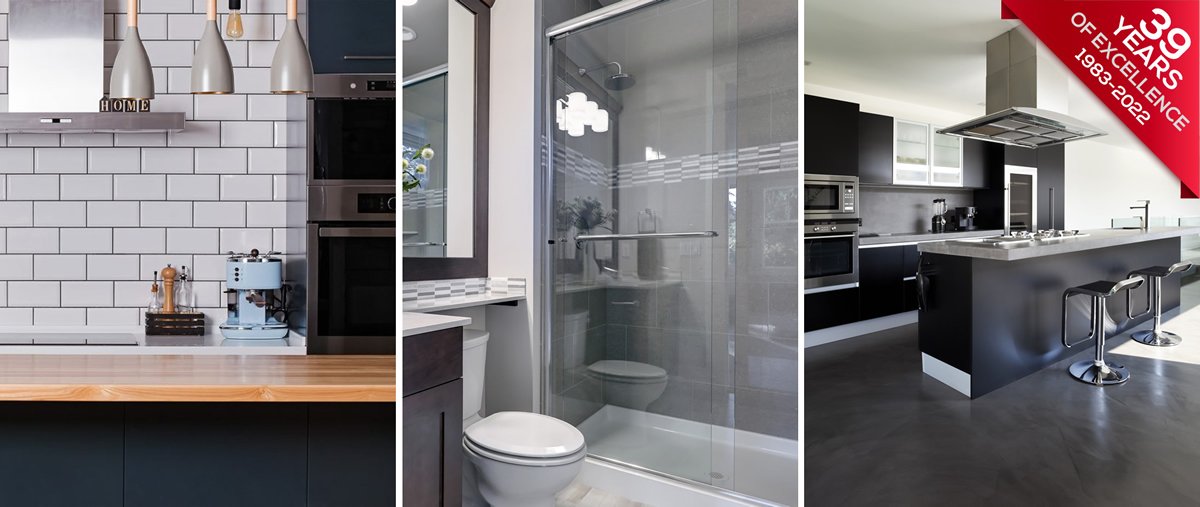Lifestyle
10 TIPS FOR DESIGNING A FITTED KITCHEN
The kitchen is one of the most frequently used rooms in the home. Over time we develop usage patterns that we accept as the most practical way to function in space. These usage patterns are not always conscious choices; Additionally, usage is often dictated by the design and layout of the kitchen (and perhaps some odd habits). As a kitchen designer and decorator, I am often asked for advice and tips on how to improve the layout and functionality of a kitchen. Of course, every kitchen is different and so it’s not possible to offer advice that will work in every application, but there are some general tips worth considering when revising the layout of a kitchen:
1. Whose kitchen is this?
If you are designing a Fitted kitchens for someone other than yourself it is worth taking a little time to understand their preferences, personal style, cooking style and type of storage needs as this should influence the layout and material types, used in the design.
2. What is practically possible?
Before you start radically changing the layout of a kitchen, you need to know that there are often practical limitations as to where some components can be positioned. The most common of these is the kitchen sink. The laws of gravity dictate that water normally flows downward; It is therefore necessary to ensure that the washbasin is not positioned in a place where this natural function is prevented. For example, if you want to place the sink on the opposite side of the room, you need to determine the path that water will take to leave the sink drain and get to the source of the drain (often via an outside wall). while maintaining a constant downward flow.
3. Dishwashers and washing machines
Referring to the above, dishwashers and washing machines differ in that the waste water is pumped out of the machine (still with distance limitations). However, this allows more flexibility in the design of the kitchen in terms of positioning.
4. Who likes washing dishes
Personally, I find washing dishes to be the most mundane of all chores, and at least I appreciate it when I can look out the window while doing it. Most kitchens are designed this way; It is a trait worth retaining whenever possible.
5. Where the sink drainer goes
If the kitchen sink is going to be placed near an adjacent wall, place the drainer toward the corner, as the corner will be used less frequently and free up usable countertop space. In general, try to keep the sink drain on the side that is least used.
6. Where is the stove
The cooker is often the focal point of the kitchen, not only visually but also practically. Proper positioning is essential for a well-functioning kitchen. The most important factor to consider is safety of use. Try to position the cooker so that access to (and around) it is not obstructed by other kitchen furniture or fixtures. Do not place cookers behind doors to avoid possible accidents from accidentally entering the kitchen. Make sure there is a suitable work surface near the stove so that hot items can be set down quickly. Consider the path of airflow if a vented exhaust system is to be used.
7. There is never enough work space
When the kitchen has limited counter space, careful use of space is essential. Try to imagine that the kitchen is being used to cook a large meal that requires a variety of tasks to be performed simultaneously. Consider incorporating appliances like microwaves and coffee makers into closets or shelves to free up the space below.
8. Open doors.
As the master chef cooks up the latest at the stove in the newly remodeled kitchen, he’ll always appreciate being able to access the contents of adjacent cabinets without having to walk around an open door to see inside.
Ensure that wherever units or equipment meet at corners (at right angles) there is adequate room to open doors and drawers without being obstructed by opposing knobs and handles (a common mistake when working on a design on Paper).
9. Hot and cold
Avoid placing refrigerators next to stoves and ovens or other heat sources such as radiators. As a practical alternative to a wall radiator, you can consider a plinth heater if it benefits the design.
10. Lighting & Electrics
Consider where electrical kitchen appliances will be used (both built-in and freestanding) and allow outlets for them within the kitchen specifications. Ensure all electrical and gas work is in accordance with building and safety codes.
Try to find a good balance between the amount of natural light entering the room and the colors used in the scheme , although different types of artificial lighting can be incorporated, having to rely on it during the day is less desirable.
4 best tips for the perfect furnishing of bathroom furniture
Bathroom furniture plays a very important role in bathroom design and decoration. The furniture not only enhances the appearance of the bathroom, but also provides important and practical storage options for bathroom items. You need to choose Fitted bathrooms carefully. Aside from a certain style matching your bathroom, you also need to consider the function of the piece of furniture you choose. Before you go to a bathroom store to buy furniture, see if they will help make the bathroom more luxurious and comfortable.
You also have to pay close attention to detail. This is because stylish furniture helps homeowners hide unfinished walls and unwanted plumbing, making the bathroom appear more stylish. There is a range of bathroom furniture available in both offline and online stores. The many types of furniture include vanities, cabinets, and shelves.
If you’re not sure which bathroom furniture is right for you, these tips will help you make the right choice to spruce up your toilet.
1. Type of furniture
It is very easy to find the type you want, as there is a wide range of bathroom furniture designed in different ways. If you want to buy stylish units with the added benefit of storage, bathroom cabinets are the best option available at most bathroom stores. Homeowners who want units that revitalize plain-looking bathrooms can find interesting vanities and vanities. Vanities have basins and drawers. There are many elegantly designed vanities that serve as striking centerpieces in any bathroom
2. Style and practicality
Clutter is common in many shared bathrooms. It’s best to prioritize practicality over style if you’re struggling with clutter. In such a situation, you should choose furniture with ample storage space. On the contrary, those with small bathrooms can purchase stylish units that add extra impact to the overall design of the toilet.
3. Type of bathroom
It is very convenient for you to install a new piece of furniture if you choose one that matches your bathroom decor. Wooden furniture blends well with traditional bathroom suites. Elegant chrome surfaces and white high-gloss finishes go well with modern bathrooms.
4. Quality
Invest in quality bathroom furniture. The quality of the material used to make the units will determine how long they will last. Stronger units are easier to clean and will serve you for many years. The furniture should also be versatile to facilitate a future bathroom remodel. High-quality furniture can also withstand constant knocks when moving, saving you additional costs for replacements and repairs.















